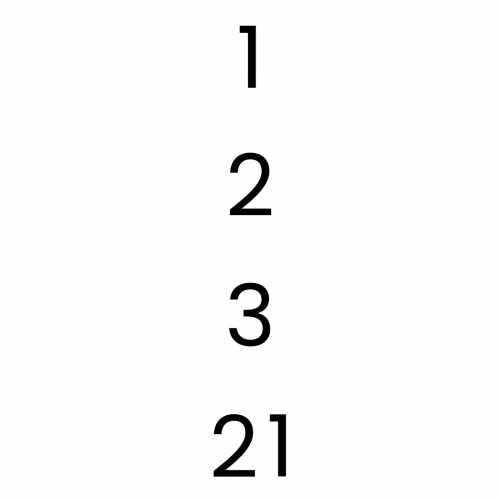Being Resilient is part of our Developing Mathematical Habits of Mind collection.
In Developing Students' Resilience, we offer you support and advice on how to encourage your students to become resilient mathematicians.
We know that good thinkers are resilient, they don't give up easily, and are motivated to work hard and keep going when faced with challenges. Here are some problems that may require similar determination from your students. You could warn your students that the solutions may not be immediately obvious, and they may need to persevere. We hope that they will have the opportunity to appreciate that
success can be sweeter after a struggle.
You can browse through the Number, Algebra, Geometry or Statistics collections, or scroll down to see the full set of problems below.

Climbing conundrum
Five children are taking part in a climbing competition with three parts, where their score for each part will be multiplied together. Can you see how the leaderboard will change depending on what happens in the final climb of the competition?
Factors and multiples game
A game in which players take it in turns to choose a number. Can you block your opponent?
Number lines in disguise

Factor lines
Arrange the four number cards on the grid, according to the rules, to make a diagonal, vertical or horizontal line.
Got it
A game for two people, or play online. Given a target number, say 23, and a range of numbers to choose from, say 1-4, players take it in turns to add to the running total to hit their target.
Two and two
How many solutions can you find to this sum? Each of the different letters stands for a different number.
So it's times!
How will you decide which way of flipping over and/or turning the grid will give you the highest total?
Can you make 100?
Number daisy
American billions

Climbing complexity
In the 2020 Olympic Games, sport climbing was introduced for the first time, and something very interesting happened with the scoring system. Can you find out what was interesting about it?
Frogs
Reflecting squarely
In how many ways can you fit all three pieces together to make shapes with line symmetry?
Isosceles triangles
Draw some isosceles triangles with an area of $9$cm$^2$ and a vertex at (20,20). If all the vertices must have whole number coordinates, how many is it possible to draw?
Substitution cipher
Factors and multiples puzzle
M, M and M
If you are given the mean, median and mode of five positive whole numbers, can you find the numbers?
Elevenses
Charlie's delightful machine
Here is a machine with four coloured lights. Can you develop a strategy to work out the rules controlling each light?
Squares in rectangles
Product Sudoku
The clues for this Sudoku are the product of the numbers in adjacent squares.
Tower of Hanoi
The Tower of Hanoi is an ancient mathematical challenge. Working on the building blocks may help you to explain the patterns you notice.
Last biscuit
Can you find a strategy that ensures you get to take the last biscuit in this game?
Wipeout
Can you do a little mathematical detective work to figure out which number has been wiped out?
Funny factorisation
Where can we visit?
Same length
Construct two equilateral triangles on a straight line. There are two lengths that look the same - can you prove it?
Shopping basket
The items in the shopping basket add and multiply to give the same amount. What could their prices be?
Triangles to tetrahedra
Cuboids
Can you find a cuboid that has a surface area of exactly 100 square units. Is there more than one? Can you find them all?
Nine colours
A little light thinking
Here is a machine with four coloured lights. Can you make two lights switch on at once? Three lights? All four lights?
In a box
Partly painted cube
Kite in a square
Can you make sense of the three methods to work out what fraction of the total area is shaded?
